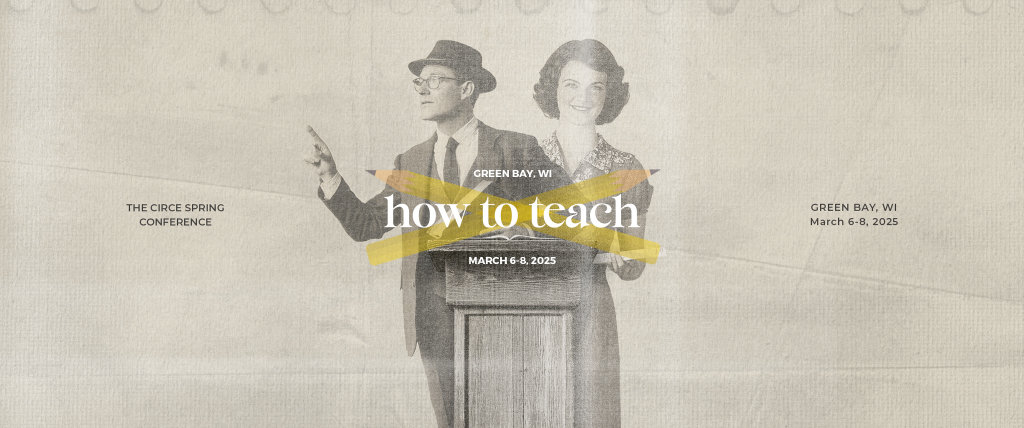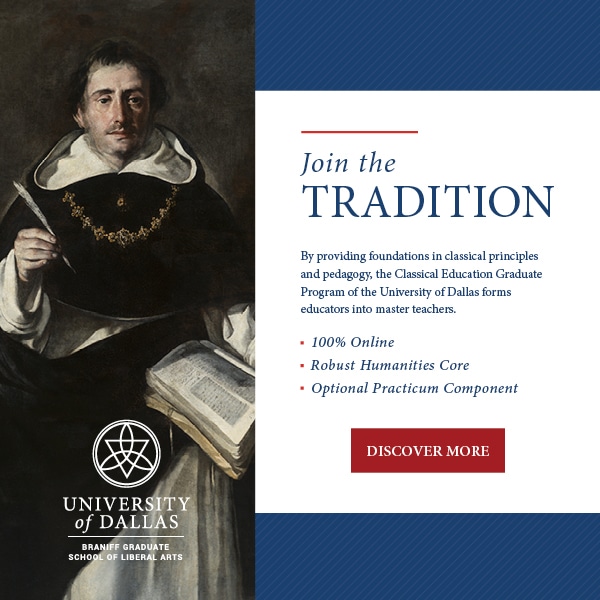The Natural Path of Classical Pedagogy

Pedagogues from Isocrates in Antiquity through Isidore in the Middle Ages believed that arts must be learned by theory, imitation, and practice.[1] By theory students learn knowledge of the art: its nature, its purpose, and its means for advancement. By imitation students emulate the finest producers and products of the art. By practice students compose their own products of the art. The order of theory, imitation, and practice varies. It may be the art, or the natural skill of the student, requires rudimentary instruction prior to participation or imitation, but other times imitation or novel participation ignites interest and inquiry into the art. For example, a pack of boys might discover the art contained in a novel game when one of them grabs an object, offers a provocative glance at his companions, and then tears off into the distance, initiating a chase. Once the first boy is caught the next boy imitates what the first did, and so on. But then, as they rest in their exhaustion, one boy, not the fleetest of foot, suggests adding a new element, a rule that develops the play in a new way—“Let’s divide ourselves into pairs, and allow passing the object to one another to avoid getting caught while the others chase!” They agree and practice tossing the object around a bit to get a feel for the innovation before beginning another round.
Theory, imitation, practice; practice, imitation, theory. The order matters only insofar as the natural requirements of learning the art dictate. Such is the method, the pedagogy, of classical education, which has long sought to follow the order of nature; though it has not always been clear what nature orders. What if a student isn’t motivated or apt to learn through these three means?
In Antiquity, when a pupil exhibited laziness or committed errors, often the method of motivation involved a sound beating. In his Confessions, Augustine laments the misuse of corporal punishment during Greek lessons, especially compared to Latin lessons (his native language):
Difficulty, in truth, the difficulty of a foreign tongue, dashed, as it were, with gall all the sweetness of Grecian fable. For not one word of it did I understand, and to make me understand I was urged vehemently with cruel threats and punishments. Time was also (as an infant) I knew no Latin; but this I learned without fear or suffering, by mere observation, amid the caresses of my nursery and jests of friends, smiling and sportively encouraging me. This I learned without any pressure of punishment to urge me on, for my heart urged me to give birth to its conceptions, which I could only do by learning words not of those who taught, but of those who talked with me; in whose ears also I gave birth to the thoughts, whatever I conceived. No doubt, then, that a free curiosity has more force in our learning these things, than a frightful enforcement. (Bk. 1)
Not that Augustine despised all use of “severe punishments,” since much of his confession involves thanksgiving for the punishments that God used to drive Augustine to His Maker. Yet the natural order, uncorrupted by disorder, responds with suppleness to the tender, playful, and joyful instruction and correction Augustine experienced as an infant.
The idea that a student finds learning inherently delightful precedes Augustine, however. In his Poetics, when discussing the natural appeal of imitation, Aristotle says, “[T]hat to learn gives the liveliest pleasure, not only to philosophers but to men in general; whose capacity, however, of learning is more limited. Thus the reason why men enjoy seeing a likeness is, that in contemplating it they find themselves learning or inferring, and saying perhaps, ‘Ah, that is he.’ (I.iv)”
Whether one’s capacity for it waxes great or wanes small, an inherent pleasure of learning naturally accompanies learning art.
Yet the disorder of our present corruption and own finitude often thwart this natural pleasure. Teachers do not always see the natural pathway to learning for each individual student, in each particular class, for each particular portion of the art. This is finitude. Then there are the corruptions of mortality—fatigue, hunger, illness, mental anguish, and the like. There are also the corruptions of vice—vainglory, envy, anger, sloth, covetousness, gluttony, lust—which drag the soul down from the ethereal pleasures of learning into the prison-house of bodily appetites. Aided by the Holy Spirit, by what means do we overcome the vices, vulnerabilities, and vicissitudes that accompany learning?
In order to remind my students (and myself) how we can remain upon the natural path of learning, we recite several truths from our daily catechism. One of them goes as follows: “How does one receive the liberal arts? By theory, imitation, and practice sought with diligence, humility, and prayer.” Like theory, imitation, and practice, the virtues of diligence, humility, and prayer may follow different orders of dispensation. Christopher Perrin reminds us that the Latin root for diligence is diligere; to esteem, love, or respect. In his Enchridion on Faith, Hope, and Love, Augustine says, “one who does not love believes in vain, even if the things he believes are true; he hopes in vain, even if the things for which he hopes are those which, according to our teaching, belong to true happiness.” Lofty sentiments. But what if I do not love or delight in what I study, in what I teach? It takes a measure of humility to acknowledge that one does not have what one ought — that one is less than he should be. In such humility we do not, as students or teachers, remain lost, for Augustine continues:
[U]nless he also believes and hopes that if he asks he may also be given the ability to love. For although he cannot hope without love, it may be that he does not love that without which he cannot reach that for which he hopes, for instance if he hoped for eternal life—and who does not love that?—and did not love justice, without which nobody comes to eternal life. This is the faith of Christ, which the apostle commends to us, which works through love and asks in love that it may be given what it does not yet have, seeks that it may find and knocks that the door may be opened to it. For faith obtains by prayer what the law commands.
We are not always gripped by dilegere, the love and respect by which theory, imitation, and practice produce in us the skill of any art. But we are free to ask God in prayer for that love, having been humbled by our want of it. Christ, in whom are hidden all the treasures of wisdom and knowledge, dispenses every good and perfect gift to men generously, and especially to those who ask in His name and for His sake. It is in His nature to do so, just as it is in our nature to imitate Him. Time to practice!
[1] The triad of theory, imitation, and practice appears in Rhetorica Ad Herennium Bk. 1.ii.3. In a footnote to the Loeb edition of the text the translator, Harry Caplan, indicates that the triad goes back as far as Protagoras, Plato, and Isocrates.

Joshua Butcher
Joshua Butcher is married to the indefatigable Hannah and is the father of four festive boys and one gregarious girl. He began teaching Classical Christian Education in 2010 and continues to climb further up and further in. Joshua aspires to be capable of teaching an entire rhetoric curriculum using only Homer and Shakespeare.










